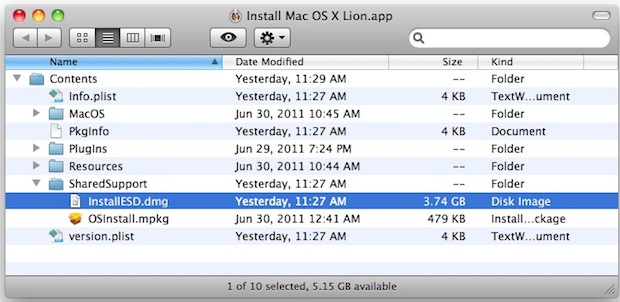Aug 04, 2017 Install macOS 10.14 Mojave on VMware. Install macOS 10.14 Mojave on VirtualBox; Install macOS High Sierra 10.13 on VMware in Windows. Before we get started, there are several points you need to make sure you have full-filled the requirements and accomplished the. Apr 02, 2018 Go to the VMware macOS Unlocker page to download. Click the Clone or download button, then click Download ZIP. Power off all virtual machines running and exit VMware. Extract the downloaded.zip file in step 1. On Windows, right-click on the win-install.cmd file and select Run as Administrator to unlock. Aug 04, 2017 Open VMware Workstation and click on “Create a New Virtual Machine” or simply press ” Ctrl + N” to open New Virtual Machine Wizard. When opened, let it by default and click Next. New Virtual Machine Wizard. On this page, select “I will install the operating system later” and click Next. Guest OS Installation.
Reinstall from macOS Recovery
- Installing Mac OS X in VMWare Workstation on Windows 8. 2014-07-21. Comments 1 I created Mac OS X Virtual Machine on VMWare. It wasn’t simple process, so I decided to share this experience. I was following this article. Here is an outline: Download and install VMWare.
- Sep 04, 2015 Mac OS X 10.9; This is a self made 10.9 mavericks full dmg. It only has osx 10.9 vanilla image. This can be use to make USB installer that will work on MAcs, VMware workstation and to install hackintosh.
- Manually Installing VMware Tools in a Mac OS X Virtual Machine. For Mac OS X virtual machines you install or upgrade VMware Tools using an installer assistant. If you use VMware Fusion or ESXi on a computer with an Apple label, you can create Mac OS X Server (10.5 or later) virtual machines and install VMware Tools.
macOS Recovery makes it easy to reinstall the Mac operating system, even if you need to erase your startup disk first. All you need is a connection to the Internet. If a wireless network is available, you can choose it from the Wi-Fi menu in the menu bar. This menu is also available in macOS Recovery.
1. Start up from macOS Recovery
To start up from macOS Recovery, turn on your Mac and immediately press and hold one of the following combinations on your keyboard. Release the keys when you see an Apple logo, spinning globe, or other startup screen.
Command (⌘)-R
Reinstall the latest macOS that was installed on your Mac (recommended).
Option-⌘-R
Upgrade to the latest macOS that is compatible with your Mac.
Shift-Option-⌘-R
Reinstall the macOS that came with your Mac, or the closest version still available.
You might be prompted to enter a password, such as a firmware password or the password of a user who is an administrator of this Mac. Enter the requested password to continue.
When you see the utilities window, you have started up from macOS Recovery.
Mac Os X Vmware Image

2. Decide whether to erase (format) your disk
You probably don't need to erase, unless you're selling, trading in, or giving away your Mac, or you have an issue that requires you to erase. If you need to erase before installing macOS, select Disk Utility from the Utilities window, then click Continue. Learn more about when and how to erase.
3. Install macOS
When you're ready to reinstall macOS, choose Reinstall macOS from the Utilities window. Then click Continue and follow the onscreen instructions. You will be asked to choose a disk on which to install.
- If the installer asks to unlock your disk, enter the password you use to log in to your Mac.
- If the installer doesn't see your disk, or it says that it can't install on your computer or volume, you might need to erase your disk first.
- If the installer is for a different version of macOS than you expected, learn about macOS Recovery exceptions.
Please allow installation to complete without putting your Mac to sleep or closing its lid. During installation, your Mac might restart and show a progress bar several times, and the screen might be empty for minutes at a time.
If your Mac restarts to a setup assistant, but you're selling it, trading it in, or giving it away, press Command-Q to quit the assistant without completing setup. Then click Shut Down. When the new owner starts up the Mac, they can use their own information to complete setup.
Mac Os Dmg Vmware
macOS Recovery exceptions
Install Os X Mavericks.app.dmg Vmware 7
The version of macOS offered by macOS Recovery might differ in certain circumstances:
- If macOS Sierra 10.12.4 or later has never been installed on this Mac, Option-Command-R installs the macOS that came with your Mac, or the closest version still available. And Shift-Option-Command-R isn't available.
- If you erased your entire disk instead of just the startup volume on that disk, macOS Recovery might offer only the macOS that came with your Mac, or the closest version still available. You can upgrade to a later version afterward.
- If your Mac has the Apple T2 Security Chip and you never installed a macOS update, Option-Command-R installs the latest macOS that was installed on your Mac.
- If you just had your Mac logic board replaced during a repair, macOS Recovery might offer only the latest macOS that is compatible with your Mac.
If you can't get macOS Recovery to offer the installer you want, you might be able to use one of the other ways to install macOS.
Other ways to install macOS
- You can also install macOS from the App Store or Software Update preferences. If you can't install macOS Catalina, you might be able to install an earlier macOS, such as macOS Mojave, High Sierra, Sierra, El Capitan, or Yosemite.
- Or create a bootable installer disk, then use that disk to install macOS on your Mac or another Mac.